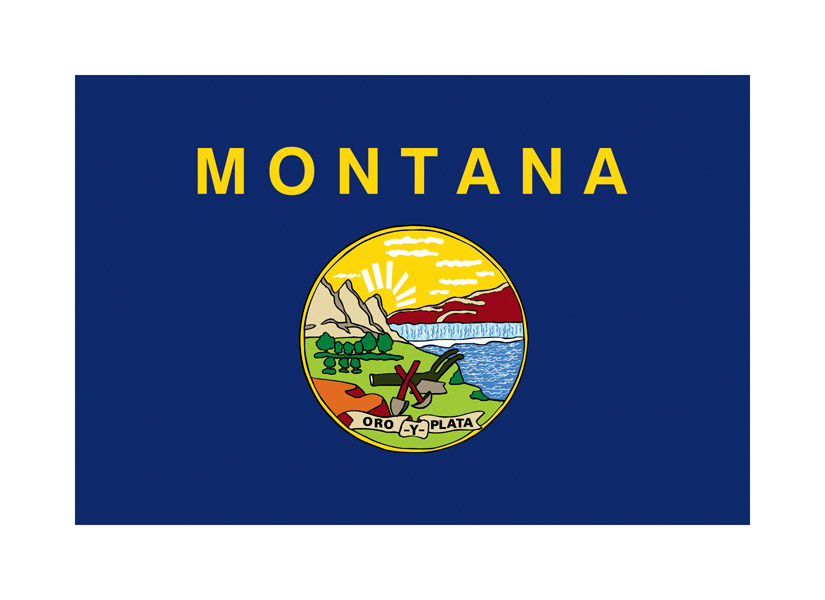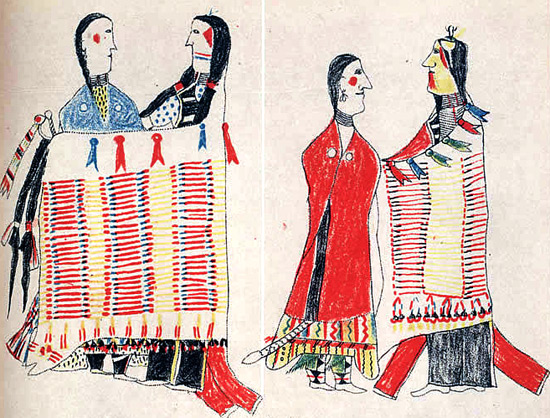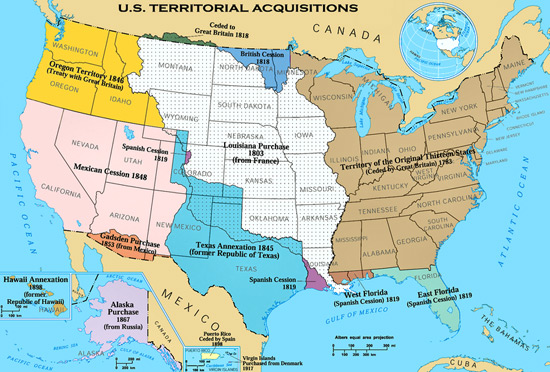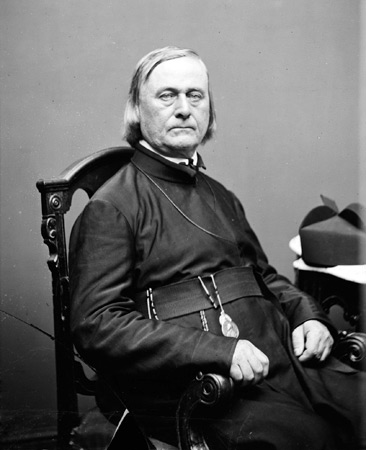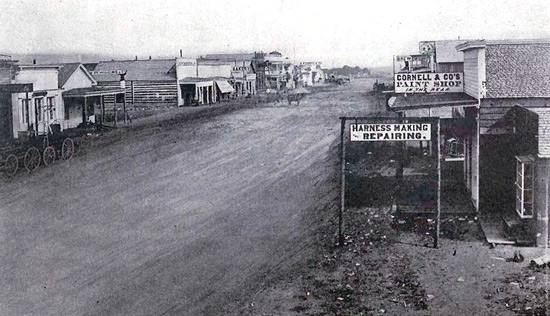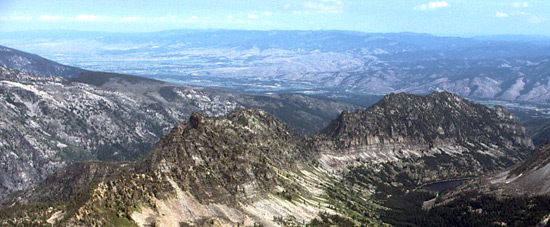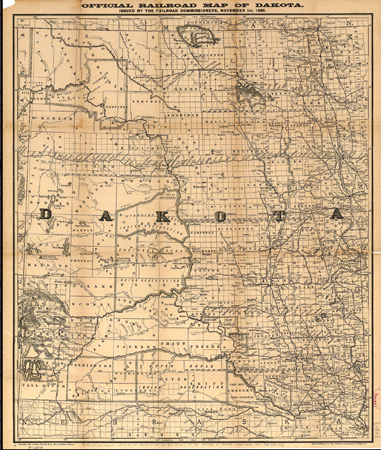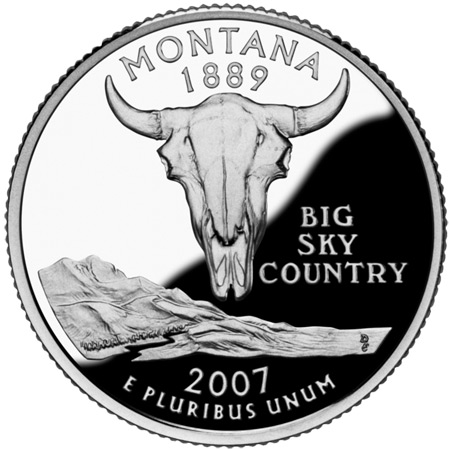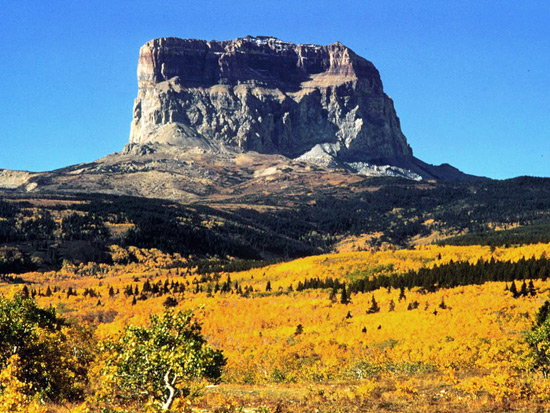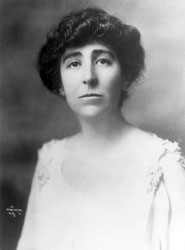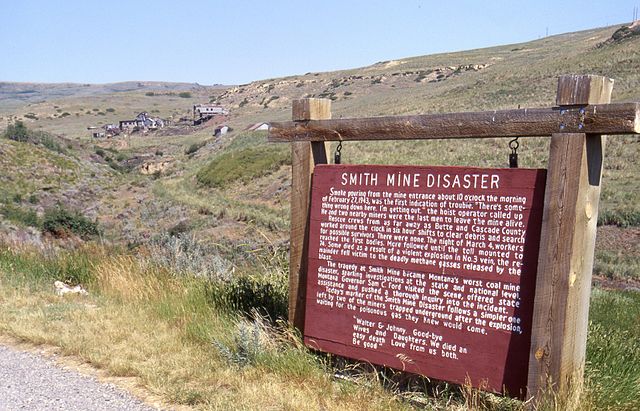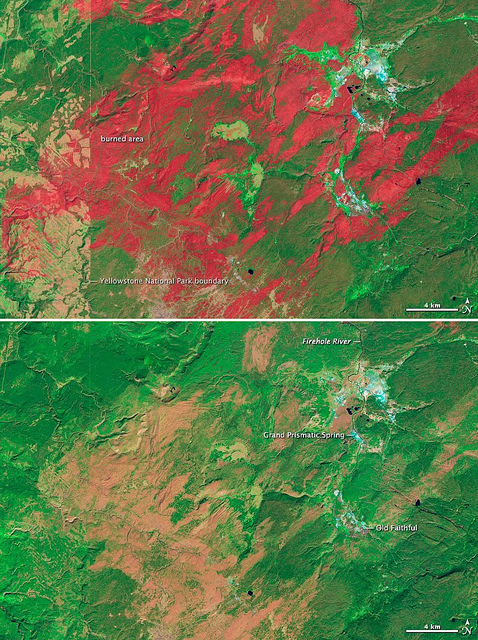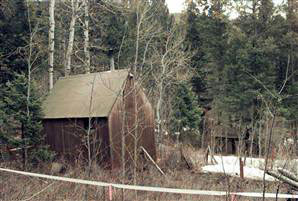Prior to 1800 Pre-European Settlement
| Date | Event |
| 6500 BCE | Prehistoric nomads who follow the mammoth and buffalo populate all areas of Montana. |
| 1680 | After the Spanish bring horses to the "New World," wild horses spread across the Great Plains, eventually reaching Montana. The Native Americans capture and trade horses with other tribes in the east. |
| 1700-1800 | The Arapaho, Assinboine, Atsina, Blackfeet, Cheyenne, and Crow tribes live on the plains. The Bannack, Flathead, Kalispell, Kootenai, and Shoshone tribes inhabit the western mountains. When the first U.S. settlers arrive, there are as many as 15,000 members of the Blackfeet Nation living in the area. |
1800–1849 Westward Expansion
| Date | Event |
| 1803 | (December 30) The Louisiana Purchase. The U.S. acquires Montana (and 13 other future U.S. states) from France as part of the Louisiana Purchase. U.S. President Thomas Jefferson agrees to the purchase price of 78 million francs ($15,000,000) from French head of state Napoleon Bonaparte. The purchase is lauded by supporters and savaged by critics of Jefferson. It more than doubles the size of the United States and is a defining moment in the expansion of U.S. territory. |
| 1805-06 | Led by William Lewis and Meriwether Clark, the Lewis & Clark expedition enters Montana on its way to the Pacific Coast, becoming the first white exploring expedition in the region. The group makes its way up river through the limestone-walled gorge it dubs the Gates of the Mountains on the Missouri River. After crossing the Continental Divide on its return trip, the expedition splits into two groups so Lewis can explore and map the Marias River and Clark can do the same with the Yellowstone River. The latter inscribes his name in a sandstone pillar 25 miles northeast of Billings on July 25, 1806. |
| 1807 | Fur trader and explorer Manuel Lisa builds the first fur trading post in Montana on the Yellowstone River. |
| 1812 | (July 4) Montana becomes part of the Missouri Territory after the Louisiana Territory is renamed to avoid confusion with the new state of Louisiana. |
| 1818 | The Treaty of 1818 establishes Oregon Country, a shared British-U.S. territory that includes a portion of western Montana. |
| 1821 | (August 10) When Missouri joins the Union as the 24th state, the remainder of the Missouri Territory, including Montana, becomes unorganized. |
| 1828 | Fort Union, an American Fur Company post, is built at the mouth of the Yellowstone River. For 30 years, the fort remains the most important trading post in John Jacob Astor’s northern Plains fur empire. |
| 1833 | (August 9) Maximilian, Prince of Prussia, reaches Fort McKenzie, the westernmost outpost of white settlement on the Missouri River. He collects local plants and animals and studies the native people. His notes on the expedition are published in Paris by subscription from 1839-1841. |
| 1841 | Father Pierre-Jean de Smet, a Flemish priest, establishes St. Mary’s Mission in what is now Stevensville. It is the first attempt at a permanent U.S. settlement. |
| 1846 | (June 15) Great Britain cedes the far western portion of present-day Montana to the U.S as part of the Oregon Treaty, and it becomes part of the unorganized U.S. territory. |
| 1847 | Fort Benton is founded on the Missouri River as a military and trading post. The world’s furthest inland port at the time, it soon becomes the "head of navigation" to the west. Steamboats bring gold seekers, fur traders, and settlers, making Fort Benton the "Birthplace of Montana." Still in existence, it is now Montana’s oldest continuously populated town. |
| 1848 | (August 14) The Oregon Territory is organized, encompassing present-day Idaho, Oregon, Washington, western Wyoming and northwestern Montana. |
1850–1899 The State of Montana
| Date | Event |
| 1851 | (September 17) The Fort Laramie Treaty is signed between the U.S. government and the Sioux. The Sioux pledge not to harass the wagon trains traveling the Oregon Trail in exchange for $50,000. The treaty produces a brief period of peace, but that peace is broken by mass U.S. immigration into the territory set aside for the Native Americans. |
| 1853 | Johnny Grant raises the first beef herd in Deer Lodge Valley. The lush prairie grasses in Montana become attractive to cattlemen, and free government land makes possible the expansion of the cattle business. (March 2) Washington Territory splits from Oregon Territory, taking with it the western tip of Montana. The rest of Montana remains unorganized territory. |
| 1854 | (May 30) The unorganized Montana territory becomes part of Nebraska Territory. |
| 1857 | The first sheep ranching begins in the Bitterroot Valley. |
| 1861 | (March 2) The Dakota Territory splits from Nebraska Territory. It encompasses all of Montana aside from the portion still in Washington Territory. |
| 1863 | (March 4) All of present-day Montana becomes part of the newly formed Idaho Territory. Bannack sheriff Henry Plummer’s alleged "road agent" gang steals $250,000 and kills 102. Outraged citizens form a vigilante committee and Henry Plummer and 21 of his gang members are hanged and many more are banished from the territory. Last Chance Gulch and Alder Gulch are the sites of major gold discoveries. Last Chance Gulch becomes Helena after the gold strikes. It is made the capital of Montana in 1875. |
| 1864 | (January 10) The Montana Vigilantes hang controversial Bannack sheriff Henry Plummer for his alleged "road agent" gang practices, which include killing almost 100. (May 28) Congress forms the Montana Territory out of the Idaho Territory, demarcating the border along the Bitterroot Range north of 46°30' north. The boundaries of the territory correspond to those of the modern state of Montana. |
| 1866 | Cattle rancher Nelson Story drives a thousand longhorn cattle from Texas to Montana, launching the Montana cattle industry in earnest. Red Cloud’s War, a two-year war between the Sioux (led by Chief Red Cloud) and the U.S. Army, begins. The war is waged over control of Wyoming's Powder River Country, which is situated along a major access route to Montana's gold fields. (December 21) The Sioux win a major victory near Fort Philip Kearney, wiping out an entire command of 80 U.S. Army soldiers. |
| 1868 | Red Cloud's War ends with the signing of treaty that closes the Bozeman Trail and creates the Great Sioux Reservation. It results in U.S. abandonment of three Montana forts. |
| 1870 | (January 23) Searching for a band of hostile Blackfoot Native Americans, U.S. Army forces come upon the peaceable Piegan band and kill 173, many of them women and children. The open-range cattle industry begins on Montana’s prairies. |
| 1872 | (March 1) Congress creates the 2.2 million–acre Yellowstone National Park, which extends into present-day southern Montana. |
| 1876 | The Great Sioux War, a series of territorial battles between the Lakota, Northern Cheyenne, and U.S. Army, begins. The war ends a year later, and most remaining Natives are exiled to Indian Territory (now Oklahoma). (June 25–26) The Battle of Little Bighorn (also known as Custer’s Last Stand) occurs near present-day Crow Agency, Montana. Lieutenant Colonel George Custer and more than 600 cavalry advance on a Native American encampment of 2,000–4,000 Sioux and Cheyenne in the Little Bighorn Valley. In what becomes one of the most famous battles in U.S. history, Custer is killed along with 250 of his men. |
| 1877 | Nez Perce chief Joseph leads his people out of Oregon and into Montana when the U.S. government tries to relocate the Nez Perce to the Idaho Reservation. Native Americans and U.S. troops fight a two-day battle at the Big Hole in southwestern Montana. Chief Joseph surrenders in October near Bear’s Paw Mountain in northern Montana, 40 miles from the Canadian boundary. Montana’s population grows from 39,000 to nearly 143,000 due to the riches of the gold, silver, and copper mines at Butte. Butte Hill comes known as "the Richest Hill on Earth." |
| 1884-85 | Five hundred Blackfeet Native Americans die from starvation over the course of the winter when Blackfeet Indian Reservation agent John Young rations out food only to white settlers. |
| 1889 | (November 8) Montana becomes the 41st state admitted to the Union. |
| 1892 | (April 30) Fort Shaw Indian Industrial School opens to provide industrial training to young Native Americans. (October 15) The U.S. government convinces Crow Native Americans to give up 1.8 million acres of their reservation in the mountainous area of western Montana for 50 cents per acre. The land is then opened to settlers. |
| 1895 | While searching for gold in Montana’s Yogo Gulch, Jake Hoover finds sapphires. From 1898 to 1923, the Yogo Dike yields 16 million carats of the gems. |
1900–1949 Early to Mid 20th Century
| Date | Event |
| 1910 | Congress establishes Glacier National Park, which becomes a major Montana tourist attraction. The park encompasses one million acres of land. |
| 1910-18 | The homesteading boom on Montana’s plains reaches its peak. Both experienced farmers and adventurers with no agricultural background file for homesteads in the state. When severe drought sweeps the state in 1918, the boom goes bust. |
| 1914 | Montana women receive the right to vote six years before passage of the 19th Amendment. |
| 1916 | Jeannette Rankin of Missoula is elected to the U.S. House of Representatives, becoming the first woman to serve in Congress. She wins national fame in 1941 as the only member of Congress to vote against U.S. entry into World War II. An avowed pacifist, she previously also voted against entering World War I. |
| 1919 | (August 2) Montana becomes the 13th state to ratify the 19th Amendment, granting women nationwide the right to vote. |
| 1937-38 | An infestation of crickets in Montana and Wyoming causes nearly $1 million in crop damage. |
| 1941-45 | Montana’s economy receives a boost during World War II. Flour, meat, and metals are all in demand. After the war, prices drop and many farms are abandoned for work in the cities. During the duration of the war, Italian nationals are taken to a detention site at Fort Missoula. Upon seeing the impressive view of mountain ranges and wildflowers, they dub it Bella Vista, or "beautiful view." |
| 1943 | (February 27) The Smith Mine Disaster becomes the worst coal-mining disaster in Montana when underground explosion attributed to a buildup of methane gas kills 74 miners. |
1950–present Modern Montana
| Date | Event |
| 1951 | A petroleum boom begins in eastern Montana. At present, the U.S. Geological Service estimates there are at least 4.3 billion barrels of recoverable oil in the region. |
| 1970s | Montana’s gas, oil, and coal industries expand rapidly when an energy shortage develops in the U.S. Open-pit strip mines operate in southeastern Montana sites. In the early 1980s, fuel prices fall and Montana’s production levels off. |
| 1980 | (May 18) Fallout from the Mount St. Helens volcanic eruption in Washington travels as far as western Montana. |
| 1988 | (June 23) The Yellowstone Fire begins. By September 11, 1.6 million acres in Idaho and Montana have burned in the largest wildfire in Yellowstone’s recorded history. Only the arrival of cool, moist weather in late fall brings the fires to an end. Thirty-six percent of the park is affected by the wildfires. |
| 1993 | Robert Redford’s film A River Runs Through It, about fly-fishing in Montana, sparks increased tourism and immigration to the state. |
| 1995 | Wolves are returned to Yellowstone National Park, where they soon thrive. The last grey wolf had disappeared from the Yellowstone region in 1926. By 2008 their population reaches 1,500. |
| 1996 | Suspected "Unabomber" terrorist Ted Kaczynski is captured at his remote cabin near Lincoln. Bombs Kaczynski sent via U.S. mail had killed three and injured 23 over 17 years. |
| 1997 | Montana passes a new law making the entire state an "offshore" banking center. The law allows foreign interests to anonymously stash their cash in the state. However, depositors cannot be U.S. citizens, and a minimum of $200,000 is required. |
| 1999 | (May 28) New speed limits take effect and end Montana’s status as the only state without a daytime speed limit. |
| 2003 | Wildfires destroy about 10 percent of Montana's Glacier National Park. |
| 2006 | A wildfire destroys 20 houses and 15 other structures as it spreads to a total of 180,000 acres. |
| 2009 | The Montana Supreme Court rules that physician-assisted suicide is legal. Montana becomes the third state to legalize the practice. |
| 2015 | A oil pipeline leak spills 50,000 gallons (190 KL) of oil into Yellowstone River. Downstream residents are advised not to use the water due to elevated levels of benzene. |
| 2017 | Wildfires burn over 1,000,000 acres, costing $300 million in state and federal resources. |
Copyright © 1993-2025 World Trade Press. All rights reserved.


